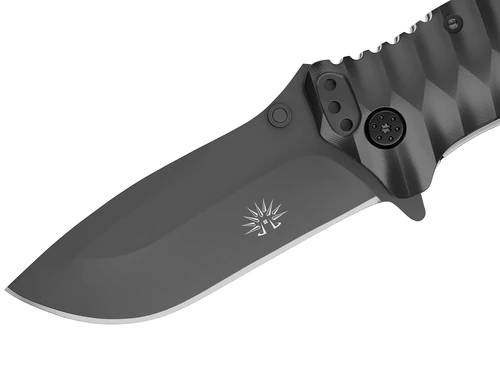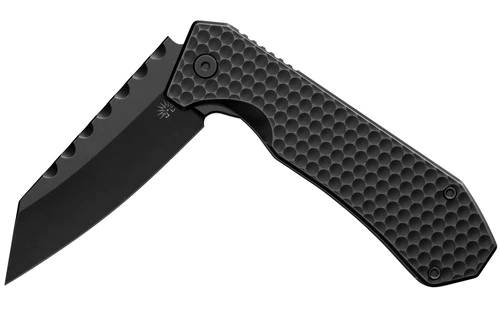
There are different thoughts about the merits of a stainless steel survival knife over a carbon steel knife, but that really only comes down to whether it’s fixed or folding. A fixed blade is made using carbon steel, because it’s strong, holds an edge, and the thickness of the blade reduces the risk breaking.
Stainless steel is reserved for folding knives, which have moving parts and are more difficult to clean thoroughly. This is where the corrosion resistance is useful. No steel is perfect; it’s always a matter of balancing the strengths and weaknesses.
Features of a Survival Knife
It should have a synthetic grip, which is easier to clean, and it needs to be ergonomic. Something that fits your hand well to prevent fatigue. There needs to be a blade lock, preferably one that can be disengaged with a single hand. You’ll be using the knife at different angles and pressure, and you don’t want it closing on your fingers.
The edge should be either straight or semi-serrated, and it’s a matter of preference which you choose. Just be aware that semi-serrated is more difficult to sharpen, and having one will reduce the length of your cutting edge.
The shape should be one with a strong, sharp tip. Drop points, tantos, and spear points are all frequently seen choices.
Types of Steel Good for a Survival Knife

A folding survival knife needs to hold its edge well, be corrosion resistant, and tough. Premium quality steels such as M390 and Elmax are ideal, but they will be more difficult to sharpen.
Many quality knife makers use a medium quality steel like AUS-8 or similar and do cryo treatments to strengthen it. This way you have medium quality steel that performs like a high-quality one for less.
If you have any questions about our products and or want help with a purchase, call us, and we will be happy to help.

